The Flora of Colombia is characterized by over 28,000 species of green plants. [1]
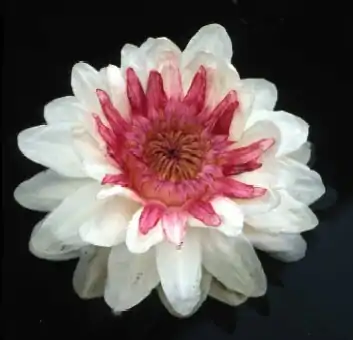
National Flower of Colombia
The national flower of Colombia is the orchid Cattleya trianae which was named after the Colombian naturalist José Jerónimo Triana. The orchid was selected by botanist Emilio Robledo, in representation of the Colombian Academy of History to determine the most representative flowering plant of Colombia. He described it as one of the most beautiful flowers in the world and selected Cattleya trianae as National symbol.
National Tree of Colombia
The national tree of Colombia is the palm Ceroxylon quindiuense (Quindío wax palm) which was named after the Colombian Department of Quindío where is located the Cocora valley, the only habitat of this restricted range species. The Quindío wax palm was selected as the national tree by the government of Belisario Betancur and was the first tree officially declared as a protected species in Colombia. C. quindiuense is the only palm that grows at such high altitudes in Colombia and is the tallest monocot in the world.
Endemism
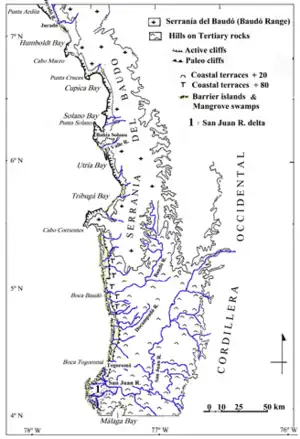
Colombia has the largest number of endemic species (species that are not found naturally anywhere else) worldwide. About 10% of the species in the world live in Colombia. Some determinant factors in the distribution range of the species are the wide diversity of habitats available due to the variety of altitudes, weather conditions, temperatures, soils and sunlight on the coasts, in the Andes [2] and in the rainforest lowlands.
Endemics can easily become endangered or extinct due to their restricted habitat and vulnerability to the actions of man, including the introduction of new organisms.
Ecoregions with high endemism
According to the Colombian Ministry of Environment, the following ecoregions have the highest percentage of botanic endemic species:
- Colombian Amazon basin
- Catatumbo River basin
- Mid Magdalena river basin
- Pacific coastal region
Tree species
Many of the Colombian trees are endangered species due to the high quality of the woods and timber industry exploitation (such as Colombian oak Quercus humboldtidiana and Colombian mahogany) and as source of tanning substances for the leather industry (such as mangrove and Encenillo tree Weinmannia tomentosa). Some tree species described in Colombia are:


- Anadenanthera peregrina
- Amazon Grape
- Adenolisianthus arboreus
- Aiouea angulata
- Anthodiscus montanus
- Astrocaryum triandrum
- Attalea septuagenata
- Bactris coloniata
- Banara ibaguensis
- Blakea granatensis
- Bonnetia holostyla
- Bulnesia carrapo
- Brazil Nut
- Borojoa patinoi
- Caryocar nuciferum
- Caryodaphnopsis cogolloi
- Casearia megacarpa
- Coccothrinax argentata
- Cryosophila kalbreyeri
- Cyathea incana
- Cyrilla racemiflora
- Chelyocarpus dianeurus
- Cherimoya
- Dendropanax colombianus
- Esenbeckia alata
- Feijoa
- Guaiacum officinale
- Garcia nutans
- Graffenrieda grandifolia
- Hirtella enneandra
- Huberodendron patinoi
- Hampea thespesioides
- Henriettella goudotiana
- Humiriastrum melanocarpum
- Itaya amicorum
- Macrosamanea consanguinea
- Neosprucea sararensis
- Platonia insignis
- Quararibea asterolepis
- Quararibea cordata
- Ouratea tumacoensis
- Reinhardtia ssp.
- Ruehssia cundurango
- Simaba cedron
- Syagrus smithii
- Tessmannianthus quadridomius
- Trigonobalanus excelsa
Fruits of Colombia
_7.jpg.webp) Chontaduro fruit (Bactris gasipaes)
Chontaduro fruit (Bactris gasipaes) Tomato tree or tamarillo (Solanum betaceum)
Tomato tree or tamarillo (Solanum betaceum) Mamoncillo (Melicoccus bijugatus)
Mamoncillo (Melicoccus bijugatus) Arazá or Strawberry guava (Psidium cattleianum)
Arazá or Strawberry guava (Psidium cattleianum) Uchuva or Cape gooseberry fruit (Physalis edulis)
Uchuva or Cape gooseberry fruit (Physalis edulis) Guanabana or Soursop fruit (Annona muricata)
Guanabana or Soursop fruit (Annona muricata) Marañon or Cashew (Anacardium occidentale)
Marañon or Cashew (Anacardium occidentale) Feijoa or Pineapple guava (Feijoa sellowiana)
Feijoa or Pineapple guava (Feijoa sellowiana) Lulo or Naranjilla (Solanum quitoense)
Lulo or Naranjilla (Solanum quitoense)
 Maypop (Passiflora incarnata)
Maypop (Passiflora incarnata) Gulupa or purple passion fruit (Passiflora edulis)
Gulupa or purple passion fruit (Passiflora edulis)
Genera







Abarema
Acidocroton
Aiphanes
Aniba
Brownea
Brunellia
Calatola
Centronia
Ceroxylon
- Ceroxylon alpinum
- Ceroxylon ferrugineum
- Ceroxylon quindiuense
- Ceroxylon sasaimae
Clusia
Eschweilera
Espeletia
Freziera
Grias
Guarea
Gustavia
Herrania
Huilaea
Inga
Leptolejeunea
Licania
Macrolobium
Magnolia
- Magnolia calimaensis
- Magnolia calophylla
- Magnolia cararensis
- Magnolia caricifragrans
- Magnolia cespedesii
- Magnolia colombiana
- Magnolia espinalii
- Magnolia georgii
- Magnolia gilbertoi
- Magnolia guatapensis
- Magnolia henaoi
- Magnolia hernandezii
- Magnolia katiorum
- Magnolia lenticellata
- Magnolia mahechae
- Magnolia narinensis
- Magnolia polyhypsophylla
- Magnolia santanderiana
- Magnolia urraoense
- Magnolia virolinensis
- Magnolia wolfii
- Magnolia yarumalense
Mayna
Meriania
Metteniusa
Miconia
Oenocarpus
Orphanodendron
Parmentiera
Passiflora
Phytelephas
Pouteria
Pradosia
Prunus
- Prunus buxifolia
- Prunus guanaiensis
- Prunus huantensis
- Prunus integrifolia
- Prunus littlei
- Prunus subcorymbosa
- Prunus villegasiana, synonym of Prunus integrifolia
Rinorea
Rollinia
Romeroa
Schoenocephalium
Solanum
- Solanum sibundoyense
- Solanum betaceum (tamarillo)
Sphaerolejeunea
Streptosolen
Swartzia
Utricularia
Vantanea
Wettinia
Xylosma
Zamia
Zygia
Orchid species
Colombia has the largest number of orchids in the world. Among others:





![Restrepia cuprea]](../I/Restrepia_cuprea_Orchi_01.jpg.webp)



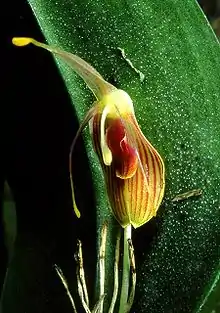









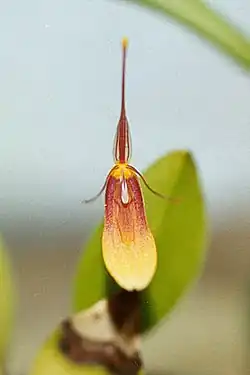
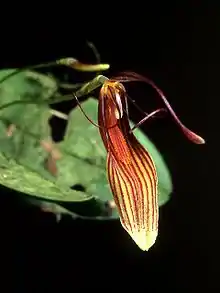






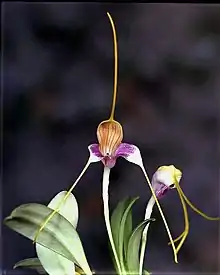










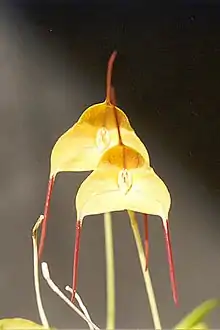

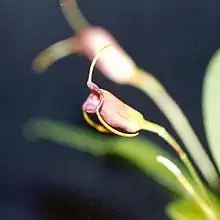

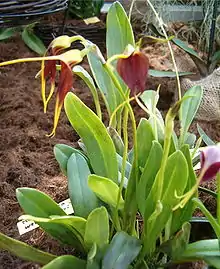
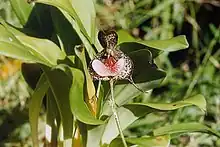
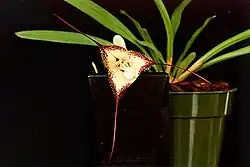




 Pleurothallis racemiflora
Pleurothallis racemiflora

 Oncidium cebolleta
Oncidium cebolleta




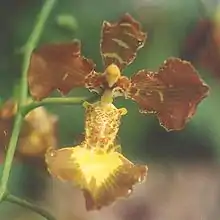





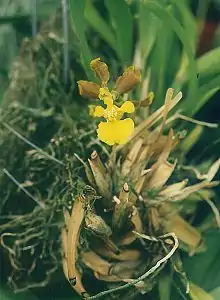

 Oncidium nubigenum
Oncidium nubigenum

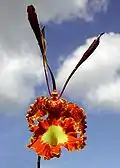 Oncidium papilio
Oncidium papilio Oncidium phalaenopsis
Oncidium phalaenopsis


 Odontoglossum bictoniense (Rhynchostele bictoniensis)
Odontoglossum bictoniense (Rhynchostele bictoniensis)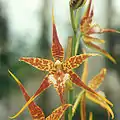 Odontoglossum cordatum (Rhynchostele cordata)
Odontoglossum cordatum (Rhynchostele cordata)
 Odontoglossum pulchellum (Cuitlauzina pulchella)
Odontoglossum pulchellum (Cuitlauzina pulchella)

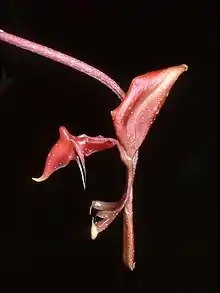


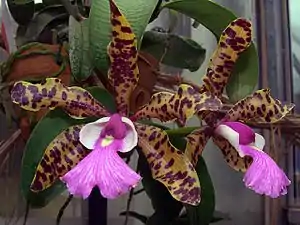



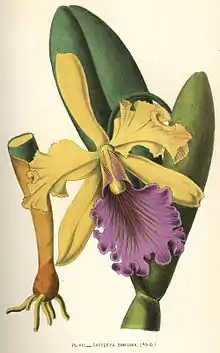

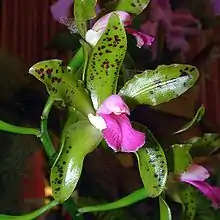
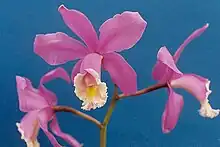

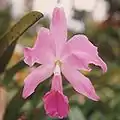



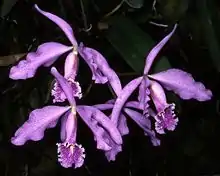

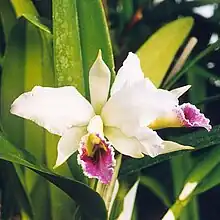
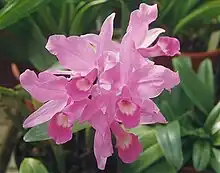


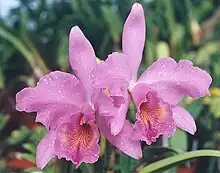
 Anguloa brevilabris
Anguloa brevilabris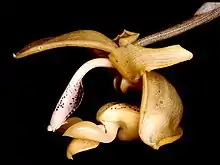
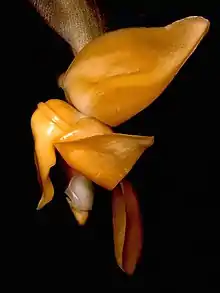



_pl._8830_(1920).jpg.webp)










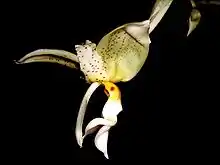


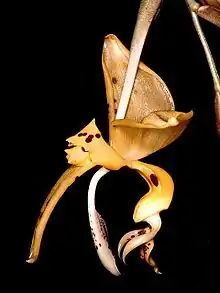




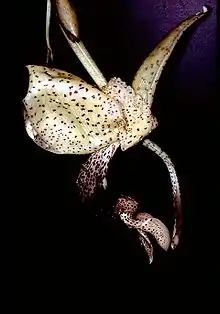







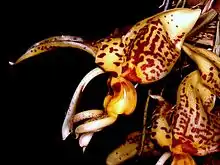


















.jpg.webp)

 Brassavola digbyana
Brassavola digbyana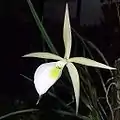




Frondaria
Restrepia
See also
References
- ↑ "Checklist of Colombian Plants". Neotropical Flora. Arizona State University.
- ↑ "Plantas y Flora de Colombia". Plantas de Colombia, VisitaConcepcion.



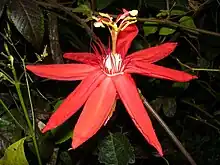




.svg.png.webp)